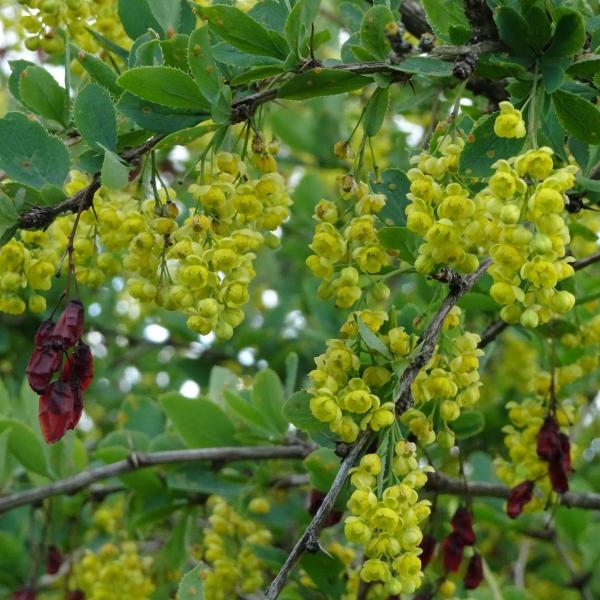
Author: Elizabeth Spinney, Vermont Department of Forests, Parks & Recreation
Common barberry (Berberis vulgaris) is a member of the barberry family (Berberidaceae), which includes native species like Blue cohosh (Caulophyllum thalictroides) and mandrake (Podophylum peltatum), but there are no native members of the Berberis genus in New England. Species within the barberry family are perennial herbs or woody shrubs, all which have alternately arranged leaves. The woody shrub species in this family have spines located at nodes along the stems.
Common barberry originates from Eurasia, and was used in European farmsteading traditions, which is how it ended up in North America. This plant easily escaped cultivation and naturalized, but was later discovered to be an alternate host of cereal stem rust (Puccinia graminis). Because these plants supported the growth and spread of a fungal pathogen that impacts cereal crops, and was directly tied to failing wheat crops in the United States, an elimination program was established as early as the 18th century. While widespread eradication efforts did not hit stride until the 1900s, the combined efforts led to a decline in the presence of this plant on the landscape, and also to the introduction of another invasive plant, Japanese barberry (Berberis thunbergii), which was touted as a rust-resistant replacement for Common barberry.
There are persisting populations of Common barberry across the United States, and in the Northeast it can be found near human development, in forests, forest edges, meadows, and fields. While not as common on the Vermont landscape as Japanese barberry, the Vermont Department of Forests, Parks & Recreation actively manage for this species on state land, including a population in the Northeast Kingdom that was scattered over 40 acres.
Leaves of Common barberry are oval, small (~1” wide and ~2” long), with serrated margins, grouped in clusters along each cane. The yellow flowers and subsequent red oblong fruit (photo at right) also hang in clusters below the cane (dangling racemes). A good way to tell Common barberry from Japanese barberry is to compare leaves. Common barberry leaves will have serrations along the edge, and Japanese barberry leaf edges will be smooth. You can also compare thorns. Common barberry thorns are singly or triply born, while Japanese barberry have single thorns.
This plant is on Vermont’s Noxious Weed List, and is listed on prohibited species lists across New England. The fall is a good time to scout for Common barberry in the woods as the plant will hold onto its leaves into the fall, with blushing on the leaves and bright red clusters of berries. University of New Hampshire Extension also offers a great list of non-invasive alternative shrubs that perform similar structural or aesthetic functions in a landscaped setting.
To learn more about Common barberry, check out www.VTinvasives.org and these additional resources:
- USDA Plants Database
- Washington State Noxious Weed Control Board
- USDA National Invasive Species Information Center
- New Hampshire Department of Agriculture
- Midwest Invasive Species Information Network
- Bugwood Invasive Plant Atlas
- US Forest Service
Photo Credit: FPR staff (Kathy Decker)